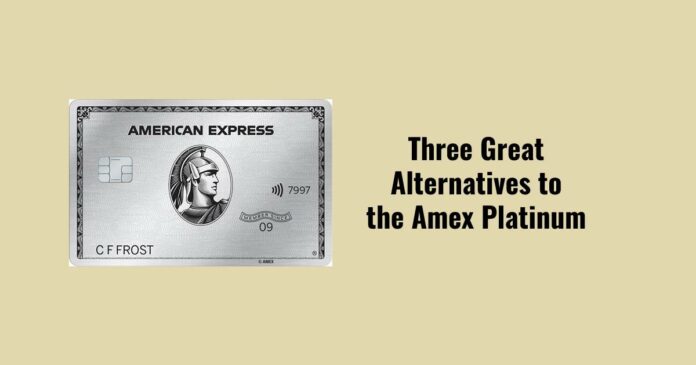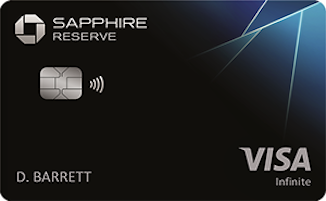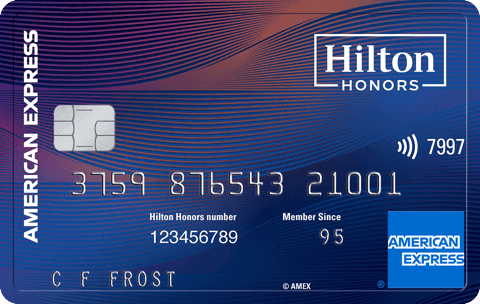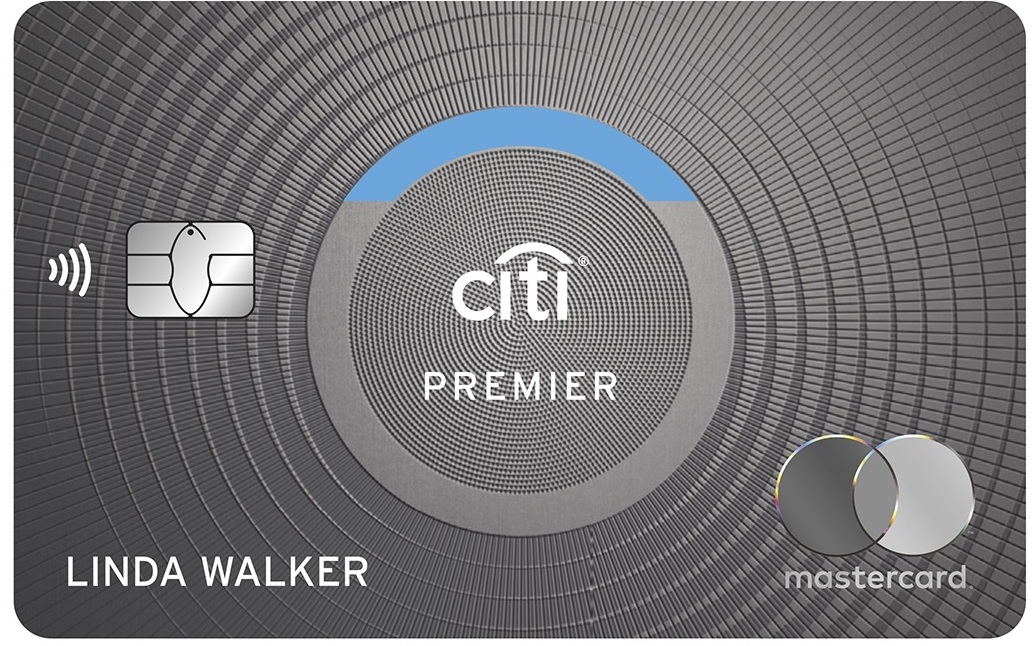
On July 1, 2021, American Express confirmed one of the worst-kept secrets in the points and miles world: that Amex would increase the annual fee on The Platinum Card® from American Express to $695 per year.
To justify this change, Amex added over $900 per year in annual statement credits. However, the response has been mixed, to put it generously. At best, Amex Platinum cardholders are shrugging off the annual fee increase as they’re able to utilize the new statement credits. At worst, cardholders are (quite vocally) headed for the exits.
Add into the mix that the Citi Prestige Card has now disappeared from Citi’s website and rumored Chase Sapphire Reserve changes, and we have quite a shakeup in the premium credit card market.
So, where does this leave us? Let’s take a look at how the Amex Platinum stacks up against 3 other premium travel credit cards so you can decide which is best for you.
In this article
New List of Amex Platinum Benefits
After the substantial benefits increase, the Amex Platinum now includes the following key benefits:
- $240/year Digital Entertainment Credit (enrollment required) — new as of July 1, 2021
- $200/year Hotel Credit — new as of July 1, 2021
- $179/year CLEAR Credit (enrollment required) — new as of July 1, 2021
- $300/year Equinox Credit (enrollment required) — new as of July 1, 2021
- Cell Phone Protection — new as of April 1, 2021
- American Express Global Lounge Collection (enrollment required) — including Centurion Lounge, Priority Pass Select, and Delta SkyClub access
- $200/year Airline Fee Credit (enrollment required)
- $200/year Uber Cash (enrollment required)
- Global Entry or TSA PreCheck application fee reimbursement (enrollment required)
- $100/year Sake Fifth Avenue statement credit (enrollment required)
- Marriott Gold Elite and Hilton Gold status (enrollment required)
- Access to Fine Hotels & Resorts and The Hotel Collection, International Airline Program, discounted Wheels Up private jet membership, and other premium travel benefits
- Transfer Membership Rewards points to 21 airline and hotel partners
Is The Amex Platinum Worth The Yearly Fee?
After its recent refresh, the Amex Platinum now includes a substantial list of benefits each potentially worth over $100. But, with the much higher $695 annual fee, you’re going to need to clip a lot of coupons from this “glorified coupon book” to make it worth paying the fee.
Ultimately, the answer of whether or not the Amex Platinum is worth the annual fee is a personal one.
If you already subscribe to The New York Times and Peacock, work out at Equinox, and use Uber each month, you can easily get more than $695 back in statement credits. Travel perks like lounge access, the Airline Fee Credit, the CLEAR Credit, the Hotel Credit, and others would be gravy on top.
However, the Amex Platinum card‘s annual fee may not be worth it if you have lounge access and Global Entry through another card, struggle to use the Airline Fee Credit each year, have to dig through the clearance rack at Saks to find anything in your budget, and don’t use Equinox, Fine Hotels & Resorts, and the card’s other high-end perks.
If this is the card you really want, we wrote up all the ways to get the best possible welcome bonus on the Amex Platinum – which won’t be through any blog’s standard affiliate links.
Amex Platinum vs. Chase Sapphire Reserve
Some are calling the Amex Platinum changes the best thing to happen to the Chase Sapphire Reserve since its initial 100,000-point bonus. But, how do the two cards now stack up? Let’s dive into which may be a better fit for you.

For a $550 annual fee, the Chase Sapphire Reserve includes the following benefits:
- $300 Annual Travel Credit — valid for gas station and grocery store purchases through December 31, 2021
- Global Entry or TSA PreCheck application fee credit
- Priority Pass Select membership
- Access to the Luxury Hotel & Resort Collection
- 12 months of complimentary Lyft Pink and DoorDash DashPass membership
- $120 in Peloton membership statement credits through December 31, 2021
- $60 in DoorDash statement credits through December 31, 2021
- Redeem points at 1.5 cents each through the Chase Ultimate Rewards portal or Pay Yourself Back tool
- Transfer Ultimate Rewards points to 13 airline and hotel partners
Comparing Sapphire Reserve Statement Credits vs. the Amex Platinum
Both the Chase Sapphire Reserve and Amex Platinum sport a hefty annual fee. And statement credits are the easiest way to get tangible monetary value back.
Compared to the Amex Platinum, the Chase Sapphire Reserve’s list of statement credits is pretty short. Cardholders get a $300 Annual Travel Credit each year. Plus, now through December 31, 2021, cardholders can get $120 in Peloton membership credits and $60 in DoorDash credits.
Frankly, if you’re considering a premium travel card, you should be able to use the Chase Sapphire Reserve’s $300 Annual Travel Credit. Even if you aren’t traveling quite yet, you can use this credit for gas station and grocery store purchases now through December 31, 2021. This credit effectively reduces the CSR annual fee to $250 each year.
However, the Peloton and DoorDash benefits aren’t as cash-like and are only valid through December 31, 2021. So, these shouldn’t be factored into the long-term value of the card.
Comparatively, the Amex Platinum is the King of the Statement Credits. The refreshed Amex Platinum boasts over $1,400 in annual statement credits:
- $240/year Digital Entertainment Credit — up to $20 per month for memberships or purchases with Peacock, Audible, SiriusXM, and The New York Times
- $200/year Hotel Credit — for prepaid hotel bookings through Fine Hotels + Resorts or The Hotel Collection bookings with American Express Travel
- $179/year CLEAR Credit
- $300/year Equinox Credit — up to $25 per month
- $200/year Airline Fee Credit — limited to incidental fees on your selected airline
- $200/year Uber Cash — up to $15 per month with a $20 bonus in December, limited to US purchases
- $100/year Sake Fifth Avenue — up to $50 for January-June and $50 for July-December
The value of each of these credits depends on how much you actually use these service providers. Most of these statement credits has a significant limitation. Many require you to make a qualifying purchase each month to get the credit. The Digital Entertainment Credit sounds great until you realize it’s limited to just four publishers. The Airline Fee Credit seems cash-equivalent until you find that it’s only valid for certain incidental fees on one airline.
Comparing Sapphire Reserve Lounge Access vs. the Amex Platinum
Chase Sapphire Reserve cardholders get complimentary access to over 1,300 Priority Pass lounges with up to two free guests. The Amex Platinum also offers Priority Pass membership with two guests, but there’s a key difference.
The Amex Platinum Priority Pass Select membership excludes restaurant lounges. For frequent travelers through certain airports (like St. Louis or Lexington) this can be a significant difference between the two cards.
However, the Amex Platinum Global Lounge Collection is superior to the Sapphire Reserve lounge benefit in just about every other way. You get access to The Centurion Lounge and newly-rebranded Centurion Studios, Airspace lounges, plus get access to Delta SkyClub lounges when flying Delta. If your home airport has one of these lounges or you fly Delta often, the Amex Platinum certainly comes out ahead when it comes to lounge access.
Comparing Sapphire Reserve Travel Perks vs. the Amex Platinum
Finally, let’s consider the other travel perks. Both cards offer a TSA PreCheck or Global Entry application fee reimbursement, access to a luxury hotel collection, and somewhat comparable travel protections. The Amex Platinum takes it much further by adding:
- Marriott Gold Elite and Hilton Gold elite status
- $200 Airline Fee Credit
- $200 Uber cash ($15 per month with a $20 bonus in December)
- $179 per year CLEAR credit
- A new $200 hotel credit on prepaid bookings through Fine Hotels + Resorts or The Hotel Collection
Plus, the Amex Platinum grants you access to the International Airline Program — which can save you hundreds to thousands off of premium cabin flights on certain airlines.
When it comes to travel perks, the Amex Platinum clearly comes out ahead. But, you’ll have to decide for yourself if it’s worth the additional cost.
Comparing Sapphire Reserve Earning Rates vs. the Amex Platinum
When it comes to earning points, the Chase Sapphire Reserve beats the Amex Platinum for many travelers. The Amex Platinum earns an excellent 5X Membership Rewards points on flights (but only if they’re booked directly with airlines or through Amex Travel and only on up to $500k of purchases per calendar year) and prepaid hotels (but only if booked through Amex Travel). All other purchases earn 1X points.
The Chase Sapphire Reserve earns 3X Ultimate Rewards points on all dining and travel (after the $300 Annual Travel Credit is used). Other purchases earn 1X points.
When Chase launched the Chase Sapphire Reserve, that was an excellent earning rate. But, the Sapphire Reserve has been lapped by other cards since then. So, there are rumors that the Chase Sapphire Reserve is looking to make changes. If the rumors are true, the Sapphire Reserve will start earning the following as of August 15, 2021:
- 10X Points on Chase Dining (Tock), and on Car Rentals and Hotels booked through the Chase Ultimate Rewards travel portal.
- 5X Points on airline purchases when booked through the Chase Ultimate Rewards travel portal
Other dining and travel would still earn 3X points, and all other purchases will still earn 1X points. If this comes to fruition, this would eliminate any advantage that the Amex Platinum has over the Chase Sapphire Reserve when it comes to earning points.
Final Thoughts on the Sapphire Reserve vs. Amex Platinum
Taking the $300 Annual Travel Credit at face value, the Chase Sapphire Reserve effectively charges a $250 annual fee for solid point earning rates, a full Priority Pass Select membership (with 2 guests), and a Global Entry/TSA PreCheck application fee credit.
You should opt for the $695 annual fee Amex Platinum instead if you have other cards with solid earning rates and can get more than $445 in value from Centurion Lounge and Delta SkyClub access, Marriott and Hilton hotel elite status, and the over $1,400 in potential annual statement credits.
More information on the Chase Sapphire Reserve and learn how to apply.

Amex Platinum vs. the Hilton Honors American Express Aspire Card
Although the Hilton Honors Aspire Card is a hotel co-branded card, it shares a lot of the same travel perks as the Amex Platinum. For a much lower fee, you can get a higher Airline Fee Credit, top-tier hotel elite status, and the same Priority Pass lounge access. So, it’s worth comparing the two.

For the $450 annual fee, the Hilton Aspire offers cardholders the following benefits:
- $250 Airline Fee Credit (enrollment required)
- $250 Hilton Resort Credit
- $100 Property Credit at Waldorf Astoria and Conrad Hotels & Resorts
- Priority Pass Select membership (enrollment required)
- Hilton Diamond status
- Hilton Annual Weekend Night Reward
Comparing Hilton Aspire Lounge Access vs. Amex Platinum
Just like the Amex Platinum, the Hilton Aspire offers a Priority Pass Select membership that’s valid at almost all Priority Pass lounges (restaurants excluded for both). Cardholders of both cards can bring two guests at no cost.
In addition, the Amex Platinum also offers Centurion Lounge access and access to the Delta SkyClub when flying Delta. But, if you don’t fly Delta or through airports with the Centurion Lounge, this additional access isn’t worth much.
Comparing Hilton Aspire Statement Credits vs. Amex Platinum
The Hilton Aspire doesn’t have the long list of statement credits as the Amex Platinum. However, it has two travel-focused credits that more than cover the annual fee: a $250 Airline Fee Credit and a $250 Hilton Resort Credit.
Like the Amex Platinum, the $250 Airline Fee Credit is only valid on the airline that you select. So, you’ll need to choose your airline carefully — especially now that you can’t buy gift cards to trigger this credit.
To use the $250 Hilton Resort Credit, you just need to build a Hilton resort stay into your travels each year. This credit covers room rates and incidental charges that are charged to your room at a long list of Hilton resorts.
Although the Amex Platinum offers up to $1,400 in credits each year, most of its credits require making a qualifying purchase each month or semi-annually. That may mean significantly overspending or going out of your way to use the credits.
That’s one key benefit of both Hilton Aspire credits: they’re annual credits. You can theoretically use both of the credits on one trip by flying on your chosen airline to a Hilton resort.
Comparing Hilton Aspire Hotel Elite Status vs. Amex Platinum
The Hilton Aspire is unique in that it offers top-tier Hilton Diamond elite status. No other major hotel brand credit card offers top-tier hotel status just for holding a card. However, the Amex Platinum isn’t far behind. Amex Platinum cardholders get both Hilton Gold and Marriott Gold Elite status.
Hilton Gold is a solid hotel status that offers 80% bonus points on stays, room upgrades, a 5th night free on awards, and a daily food & beverage credit in lieu of breakfast. Stepping up to Hilton Diamond increases the point bonus to 100% and adds executive lounge access, upgrades as high as a one-bedroom suite, premium Wi-Fi, and a 48-hour room guarantee.
Final Thoughts on the Hilton Aspire vs. Amex Platinum
If you’re looking for some of the same travel perks of the Amex Platinum with a lower annual fee and a free night at (almost) any Hilton, the Hilton Aspire is worth a look.
By maximizing the $250 Airline Fee Credit and $250 Hilton Resort Credit, you’ll more than cover the $450 annual fee. And you’ll get a free Hilton night, Hilton Diamond elite status, and a Priority Pass Select membership to boot. That’s going to be a lot easier for many travelers to justify than the Amex Platinum.
Note that MilesTalk has previously suggested that the Hilton Aspire card is also the best hotel credit card on the market.
Get more information on the Hilton Aspire Card and learn how to apply.
Amex Platinum vs. Ritz-Carlton Credit Card
The Ritz-Carlton Credit Card has fallen off the radar for many. That’s for a good reason as you can no longer sign up for this card directly. However, cardholders of a consumer Chase Bonvoy credit card can still request a product change to the Ritz-Carlton card. So, it’s a premium card worth consideration.
For a $450 annual fee, the Ritz-Carlton card offers the following key benefits:
- Priority Pass Select membership (with up to 2 free guests)
- $300 Annual Travel Credit toward airline incidental fees
- Marriott Free Night Award up to 50,000 points per night
- TSA PreCheck or Global Entry statement credit
- Marriott Gold Elite status
- 15 Elite Night Credits with Marriott — for a boost toward higher elite status (If you also have a Bonvoy Business credit card, you’ll get 30 annual elite night credits!)
- Three 7-night Club Level upgrades at Ritz-Carlton hotels each year
- $100 hotel credit on qualifying paid stays at Ritz-Carlton or St. Regis
Comparing Ritz-Carlton Card Lounge Access vs. the Amex Platinum
The Amex Platinum is famous for its expansive lounge access. Cardmembers can access Centurion Lounges, get Delta SkyClub access when flying Delta, and a Priority Pass Select membership. However, that Priority Pass Select membership isn’t valid at Priority Pass restaurants, and Amex is tightening Centurion Lounge access. Authorized users get the same lounge perks, but there’s an additional $175 annual fee for adding up to 3 authorized users.
The Ritz-Carlton Card also offers a Priority Pass Select lounge membership with 2 free guests. As with the Amex Platinum, authorized users also get a Priority Pass membership. However, authorized users can be added to the Ritz-Carlton card for no additional annual fee. Plus, the Priority Pass on the Ritz-Carlton is valid at participating airport restaurants. That means a lot more Priority Pass access for the same annual fee.
Comparing Ritz-Carlton Card Airline Fee Credit vs. the Amex Platinum
Both the Amex Platinum ($200 annual Airline Fee Credit) and the Ritz-Carlton card ($300 Annual Travel Credit) offer an incidental airline fee credit.
On the Ritz-Carlton, the $300 Annual Travel Credit slashes two-thirds of the card’s annual fee. Plus, you can use the credit to cover qualifying incidental purchases on any airline. However, you need to manually request the credit, and not all purchases qualify.
On the Amex Platinum, the $200 Airline Fee Credit is only valid for incidental fees on the airline you choose at the start of the year. Reimbursement should be automatic, but you may need to manually request a statement credit for some purchases.
Final Thoughts on the Ritz-Carlton Card vs. Amex Platinum
The Ritz-Carlton is great if you’re looking for the cheapest way to get unlimited Priority Pass lounge access. If you can utilize the $300 Annual Travel Credit, most travelers can easily justify paying the $150 net annual fee for the 50k Free Night Award and Priority Pass lounge access.
You’ll want to opt for the Amex Platinum instead if you often fly Delta and/or fly through airports with Centurion Lounges and if you can get full value from a few of the Amex Platinum statement credits.
To product change into one, you’ll need to first have or apply for a Chase Marriott Bonvoy credit card like the Bonvoy Boundless. (Only a Chase product will work since the Ritz card is issued by Chase.)
Bottom Line
The Amex Platinum annual fee increasing to $695 per year is making many cardholders reconsider keeping the card. If that includes you, the good news is that you’ve got options. There are other great premium travel credit cards with a lower annual fee that include many of the same perks. Hopefully this post helped you find one that works for you!
Thoughts?
Let me know below in the comments, on Twitter, or in the private MilesTalk Facebook group. And don't forget to follow me on Instagram for all sorts of tips on miles, points, credit cards, and travel.
If this post helped you, please consider sharing it!
You can find credit cards that best match your spending habits and bonus categories at Your Best Credit Cards.
New to all of this? My “introduction to miles and points” book, MilesTalk: Live Your Wildest Travel Dreams Using Miles and Points is available on Amazon and at major booksellers.

















